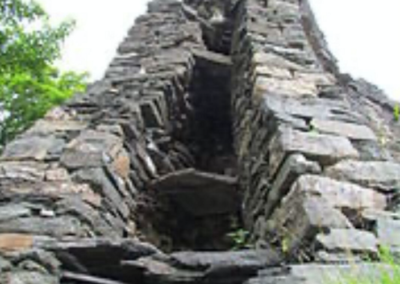
Civil engineer on the road part 1:
Monumental buildings in the far north of Europe
On my travels to the far north of Europe, more precisely to Scotland and up to the Shetland Islands, I have come across fascinating architectural evidence from the past. These amazing structures, built around 2400 years ago, are an impressive example of the architecture of times gone by. I was particularly taken with the Broch of Mousa – a structure that has been preserved exactly as it was once built, almost 2500 years after its construction.
The brochs, as these towers are called, have a diameter of around 8 to 9 meters and rise up to 15 meters high. They are made of local natural stone that was laid dry, i.e. without mortar. This construction method gives the towers an astonishing stability that has allowed them to survive to this day. Particularly impressive is the double-walled design of the outer walls, which also contributes to the stability and protects the interior from the harsh weather conditions.
The Broch of Mousa, which is considered the best preserved example of this construction method, impressively demonstrates how skillfully the master builders worked at the time. Inside the tower, niches and stairs have been integrated perfectly into the stone walls. This careful and precise work testifies to a deep understanding of the materials and an impressive engineering skill that still amazes us today.
hat makes these buildings particularly fascinating is their resilience. They have not only survived time unscathed, but also the subsequent migrations of Vikings, Picts and Scottish colonialists. They are silent witnesses to a bygone era that can still teach us a lot about building with local materials and the intelligent use of resources.
On my travels, I have noticed time and again that the use of local materials and a clever system of processing not only played a key role in the past, but are also of great importance for the future of construction. These millennia-old towers in the far north of Europe remind us of the importance of preserving the wisdom and techniques of our ancestors and integrating them into our modern construction methods.


